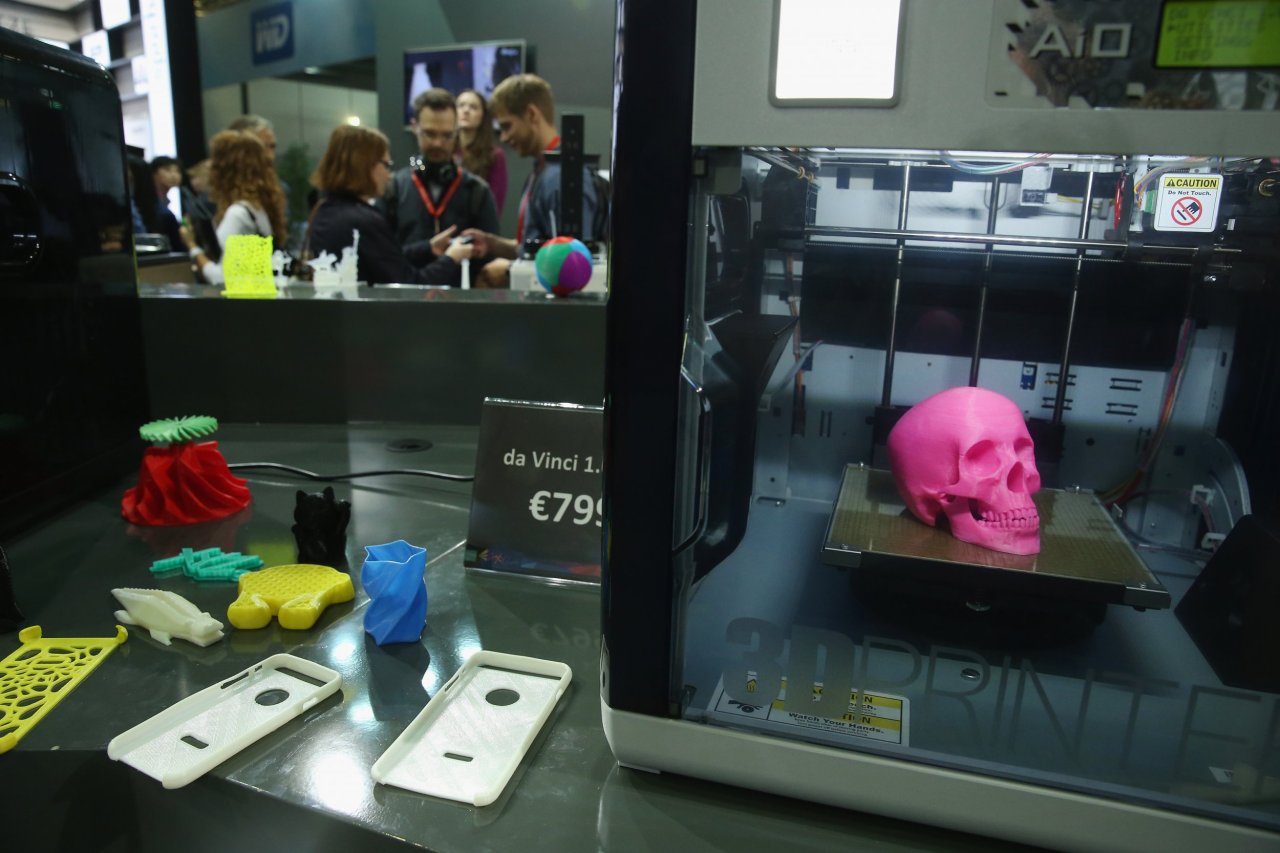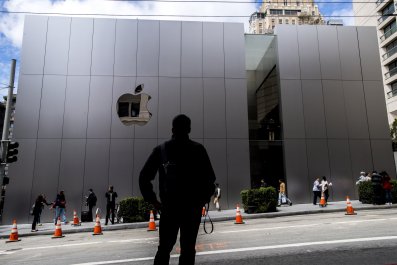January 3, 2014, was a momentous day for the 3-D printing industry. The stocks of two of its leading companies, 3D Systems and Stratasys, peaked after nearly 30 years in business, and hopes were high for the technology. Most thought it would democratize manufacturing, allowing consumers to produce customizable goods from their homes. There'd be no point in retail stores anymore; customers would instead log onto the websites of their favorite brands, download personalized product files and print them within minutes. The price of goods would be slashed, international trade deficits reversed, ethically suspect supply chains rendered unnecessary and the environment spared untold amounts of degradation, both from the reduction in mass manufacturing and global shipping, as well as the recyclable nature of the 3-D printed products themselves. It was to be the next industrial revolution.
But January 3, 2014, was also the start of a precipitous two-year decline that saw 3D Systems's shares lose more than 92 percent of their value and Stratasys's fall by over 86 percent. Expectations plummeted as well; 3-D printing turned from savior to gimmick. Industry analysts and researchers now agree that the hype far outpaced practical applications. Even the companies admit it, though they insist a revolution is still brewing.
Additive manufacturing—the original, less-sexy term for 3-D printing—has been around since the 1980s. Stereolithography, which uses ultraviolet lasers to solidify light-sensitive plastic resin built up in layers to produce three-dimensional objects, was patented by Charles Hull in 1986 and led to his formation of 3D Systems that same year. Stratasys was founded by Scott Crump in 1989 on another technique: fused deposition modeling, which uses heat to melt plastic filament that is then built up in layers. The majority of 3D Systems's and Stratasys's early business was with industrial clients who needed rapid prototyping solutions and could afford printers that cost at least five figures.
The price of 3-D printers began to fall in 2005, with the launch of RepRap, an open-source project seeking to develop a low-cost printer capable of producing its own parts. Hundreds of developers around the world built upon recently expired patents and kept their new designs freely available to others, making progress swift and inexpensive. As a result, the cost of 3-D printing dropped "by a factor of about 100," says RepRap founder Adrian Bowyer. While the public may not know the name RepRap, they have it to thank for inspiring an entire generation of 3-D printing enthusiasts who brought the technology into the mainstream.
Three of those enthusiasts—Bre Pettis, Adam Mayer and Zach Smith—banded together in 2009 to form MakerBot. After securing $75,000 in seed funding, the company began selling $750-plus printer kits. They were so popular that demand outstripped MakerBot's in-house production capacity, and the company solicited customers who had already received their 3-D printers to help produce parts to fulfill new orders. That kind of demand draws investors. In 2011, MakerBot raised $10 million in venture capital, and in June 2013, Stratasys acquired the company in a stock deal worth $403 million. The infectious enthusiasm that began with RepRap was now coursing through the industry.
Unfortunately that enthusiasm created a gulf between expectations and realities that has dogged 3-D printing companies. Make Mode, a digital design and fabrication studio, tried out two low-cost machines—first MakerBot's $2,500 Replicator 2, then Formlab's $3,000 Form 1—but both were constantly breaking down, says Make Mode co-founder Blair Gardner. So Make Mode had no choice but to upgrade to Stratasys's uPrint SE and 3D Systems's ProJet 660, which respectively cost $22,000 and $65,000—right back in the five-figure range.
Make Mode wasn't the only one having trouble with low-cost 3-D printers. In February 2015, a class action lawsuit was filed against Stratasys alleging that the company knowingly rushed defective MakerBot printers to market. (Due to ongoing litigation MakerBot declined to discuss the case with Newsweek.) Complaints from customers, growing competition and general disillusionment with low-cost 3-D printers all squeezed the company. Throughout 2015, as news broke of MakerBot laying off 20 percent of its staff and closing its three retail locations, then laying off another 20 percent of its staff and closing one of its offices six months later, Stratasys's stock dove. Although 3D Systems had attempted to build, rather than buy, its own line of low-cost printer, it seems to have been pulled down by Stratasys's sinking ship, its shares peaking on the same exact day, then falling even faster than Stratasys's.
Despite these issues, analysts remain optimistic. In 2013, Wohlers Associates, a consulting firm that specializes in 3-D printing, predicted (based on a detailed survey of 85 to 90 of some of the largest parts providers in the world) that the sector would grow to $10.8 billion by 2021. Rather than undercutting that figure in the wake of the bad news in 2015, the firm now forecasts even greater and faster growth, with the industry reaching $21.2 billion in 2020. That's because while the firm is skeptical about the value of low-end, consumer-oriented printers—"You can only make so many lime-green Yoda heads before you get a little bored and wonder, Why did I buy this 3-D printer?" says Wohlers senior consultant Tim Caffrey—the results of their survey suggest that more and more industrial clients will be buying and implementing high-end, expensive 3-D printers.
For example, printers capable of working with metals are now being integrated into production lines. They are even producing some parts completely on their own, as in Stratasys's contract with Airbus to produce more than 1,000 components for a line of the latter's aircrafts. In similar ways, Stratasys and 3D Systems describe branching into other verticals, like automotive, medical and dental. As part of this shift in focus, 3D Systems has abandoned the consumer market, discontinuing its line of low-end printers in December 2015.
This pivot away from general consumers leaves MakerBot in a precarious position, because its brand was built on delivering low-cost 3-D printers. Jonathan Jaglom, who came on as MakerBot's CEO in March 2015 after a decade at Stratasys, has been diversifying the brand's target markets to include the educational and professional sectors. The hope is to convince elementary schools up to colleges that 3-D printers can be learning tools. Thus far, MakerBot has printers in 5,000 educational institutions, including every public school in Montclair, New Jersey, as well as a lab at Montclair State University. On the professional front, the thinking goes that as Stratasys and 3D Systems continue focusing on manufacturing solutions for industrial clients, MakerBot can fill the void in the prototyping market, offering a low-cost printer to designers and engineers who need quick, cheap models for product development. To that end, MakerBot has attempted to make its printers more reliable, redesigning the extruder (the part cited as faulty in the lawsuit) and insuring it with an extended warranty.
But what of the new industrial revolution allowing us to print fully customizable goods at home? "I believe in that world," says Jaglom. "My guess is we're five years away from it." He recognizes that there are still challenges, such as reliability and lack of options when it comes to printing materials (right now you can really only print with plastic at home—not great for, say, a new sparkplug), but he's confident the challenges will be met. As an example of progress, he points to MakerBot's latest expansion of Thingiverse, the brand's website of open source product designs. In April 2016, at a 3-D printing conference in New York City, Jaglom announced that the Thingiverse API would be open to developers, creating a platform on which apps could seamlessly connect software with hardware, designers with printers, and users with services. He believes this scheme will lower the barrier to entry, allowing users without printers to work with users with printers, for example, and that a marketplace for third-party innovation will create even more value, similar to how the App Store helped push the iPhone.
Despite Jaglom's excitement about the Thingiverse API, its unveiling appears to have done little to stabilize MakerBot or reassure investors. On April 25—exactly two weeks after the API announcement—MakerBot laid off the majority of its remaining factory workers, choosing to outsource the production of its printers. Over the next month, Stratasys's stock fell almost 14 percent, and 3D Systems's shares tumbled twice as far. Investors may have realized that if the 3-D printing industry needs to rely on traditional manufacturing to produce its wares, there will be no revolution.




















